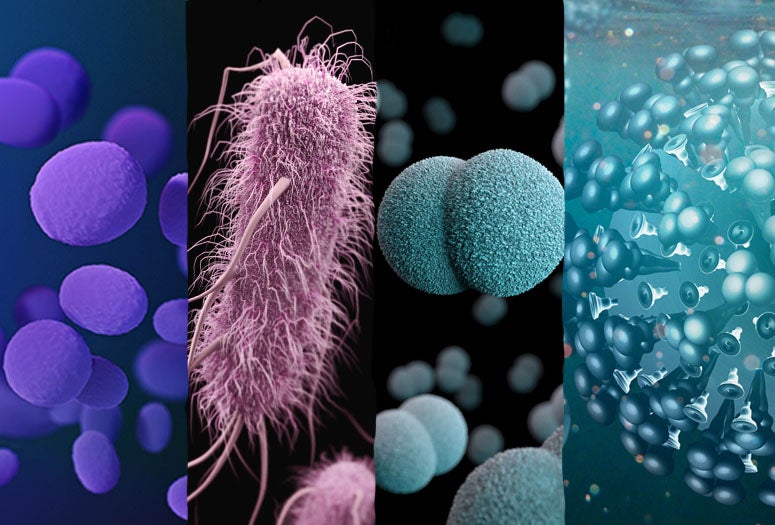
Flush it and forget it? On the contrary, advances in science and innovation are changing how we view wastewater.
In Houston, research in synthesis and sequencing of microbial nucleic acids has been an area of specific interest to study wastewater for a range of novel viruses, bacteria and fungi shed by humans to gain insight into any infectious diseases circulating within a population.
Building from efforts and knowledge gained from the COVID-19 pandemic, a team of collaborators with Rice University and Houston Health Department are investigating the use of shotgun metagenomic methods in their laboratory analysis that include high-throughput sequencing and computational analysis of all genetic material in biological samples collected from wastewater.
“Since the emergence and spread of SARS-CoV-2, we have screened Houston’s wastewater for COVID-19 and other variants of concern, as well as for seasonal influenza and the respiratory syncytial virus, known as RSV,” said Lauren Stadler, an assistant professor of civil and environmental engineering at Rice.
“We are now taking steps to enhance surveillance by investigating untargeted methods to provide a framework to proactively identify and analyze the presence of a range of microbes that are causative to human disease,” added Stadler who is the principal investigator on the study.
The study analyzed 24-hour cycled water samples for one week from seven sewersheds that serve approximately 86 percent of Houston’s population and the manholes of eight buildings for a more specific population that included children and adults, and elderly adults and caretakers.
Full results, which were published on September 8, 2023, in the American Chemical Society’s (ACS) journal Environmental Science and Technology (EST) Water, demonstrated metagenomic sequencing of wastewater treatment and building-level samples can be used as an initial screening step for public health surveillance.
“The success of Houston’s wastewater monitoring and reporting system has shown that wastewater data can be used to guide public health protection efforts,” said Loren Hopkins, chief environmental science officer for the Houston Health Department and a professor in the practice of statistics at Rice.
Hopkins says, “As surveillance programs continue to grow both nationally and globally, it is likely to become a standard part of the public health toolkit for responding to infectious diseases.”
The targeted analysis detected microbial genomes of 26 vertebrate families, such as animal viruses that affect birds and cattle and are not transferable to humans, and 21 human viral families.
The most common classification of human viruses in wastewater treatment plants and buildings included diverse enteric pathogens that are commonly associated with gastrointestinal illness. Beta coronavirus was also common in both building and wastewater treatment plant samples. Trace amounts of viral pathogens associated with blood, skin, and mucosal transmissions were detected primarily in building samples.
“Many of the human viruses classified in the study are common for people of all ages and are of little concern for a healthy person’s immune system, which keeps the virus from causing illness,” said Stadler. “Some strains can, however, be a health concern to pediatric and elderly populations and those with compromised immune systems.”
Since the start of the COVID-19 pandemic, wastewater monitoring of SARS-CoV-2 has played a critical role in the early detection of outbreaks and rapid implementation of public health measures.
“Because human microbial particles are typically present at very dilute concentrations in wastewater. There are also high concentrations of other organic matter that can interfere with the detection and sensitivity of targeted genomic methods,” said paper first author Camille McCall, a former postdoctoral researcher of Stadler’s research group who is now with GSI Environmental.
“Metagenomic sequencing holds tremendous promise, but for now, more research is needed to optimize extraction methods and capture sequences of interest,” said McCall.
Paper contributors Kristine and Todd Wylie, both assistant professors in the Department of Pediatrics at Washington University School of Medicine, are part of a team of researchers at the McDonnell Genome Institute, which developed ViroCap, a patented capture probe technique for sensitive, comprehensive, in-depth metagenomics analysis vertebrate viruses.
“Metagenomic sequencing holds tremendous promise to understanding antibiotic-resistant bacteria, antibiotic-resistance genes, and pathogens. More research is needed in the analysis of clinical and environmental data to provide clarity,” said Stadler.
Computational analysis of the expansive genome-based datasets was completed in collaboration between Stadler’s group and Todd Treangen, associate professor of computer science, and his laboratory group members postdoctoral fellow Ryan Elworth, analyst Katherine Dyson, and graduate student Ryan Doughty.
Shawn Hutchins, Communications Specialist

